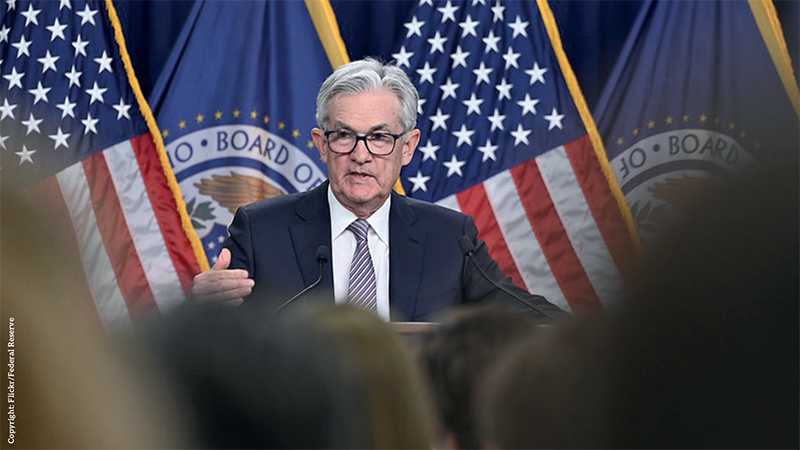The US Consumer Price Index came in below expectations in June, rising 3% annually, reigniting discussions of rate cuts by the Fed.
The results follow a May surprise to the downside, when annual growth hit 3.3% instead of the expected 3.4%, and an inflation downtick in April to 3.4% from March’s 3.5%. For the month of June, the CPI fell by 0.1%.
In the last decision of the Federal Reserve on 12 June, Jerome Powell announced that interest rates would remain in the 5.25% to 5.5% range and reiterated these rates would stay in place until inflation moved “sustainably” towards 2%.
But Lindsay James, investment strategist at Quilter Investors, believes this month’s readings “give the Fed enough a pathway” for cuts to begin.
“Like in other developed markets, services inflation continues to run a little hotter than many would like, but we are seeing goods inflation coming back down enough to offset this and bring the overall level of inflation down,” James said.
“In his Congressional testimony this week, Fed Chair Jerome Powell did try to pour cold water on the idea of rate cuts coming sooner rather than later, but also acknowledged the risk of labour markets weakening sharply due to the Fed leaving rates too high for too long.
“The employment picture in the US is beginning to weaken and economic growth is definitely now being impacted. Clearly, there is a Presidential election to consider, and given the volatility this may produce, it may be better to get the first rate cut in well before that feverishly ramps up.”
See also: IA: UK equities experience worst outflows on record in May
Seema Shah, chief global strategist at Principal Asset Management, agreed that a trail has been blazed for a September rate cut, but said a July cut is “off the table”.
“Not only would it spark questions of ‘what do they know about the economy that we don’t know?’, but the Fed still needs to gather additional evidence of waning price pressures to be absolutely certain of the inflation path,” Shah said.
“By September, however, they will likely have a series of data prints to support a rate reduction. For now, the combination of resolute jobs data and slowing inflation is an all-out positive for equities.”
Daniel Casali, chief investment strategist at wealth manager Evelyn Partners, agreed that there is likelihood of a September rate cut, but said July could also be possible with slowing inflation. Casali pointed to steadied consumer inflation expectation and a strong dollar as reasons for a slow down, as well as the remaining aftermath of Covid.
“The disruption caused by the pandemic and policy easing is still unwinding. This shows up in slowing shelter inflation, where supply and demand dynamics were distorted during Covid,” Casali said.
“Should shelter CPI inflation, which accounts for roughly 40% of underlying core inflation, continue to slow then this could be seen as a confirmation that this unwinding is intact. Indeed, in June, shelter CPI slowed to 5.2%, its lowest rate for around two years, and is down from a cyclical peak of 8.2% in March 2023.”
He added: “The key risk against this favourable outlook is a surprise rise in energy prices and workers secure higher wage rates in a period of full employment. Firms could then pass on these labour costs onto consumers in the form of higher prices. This could keep inflation higher than the Fed would like and undermine future interest rate cuts expected by the market.”
This story was written by our sister title, Portfolio Adviser








